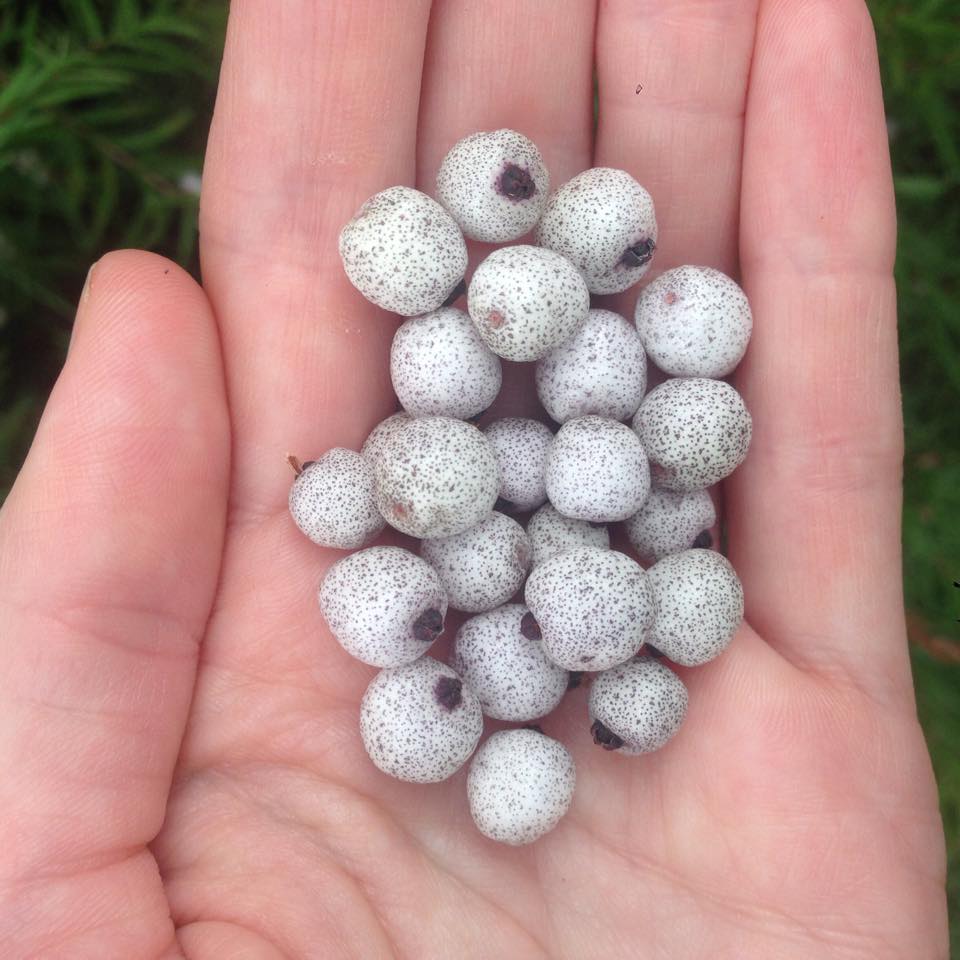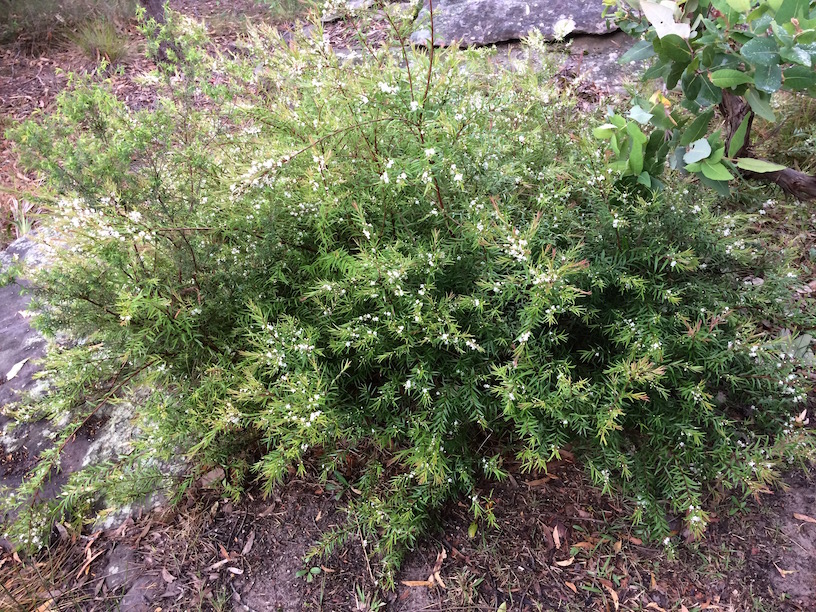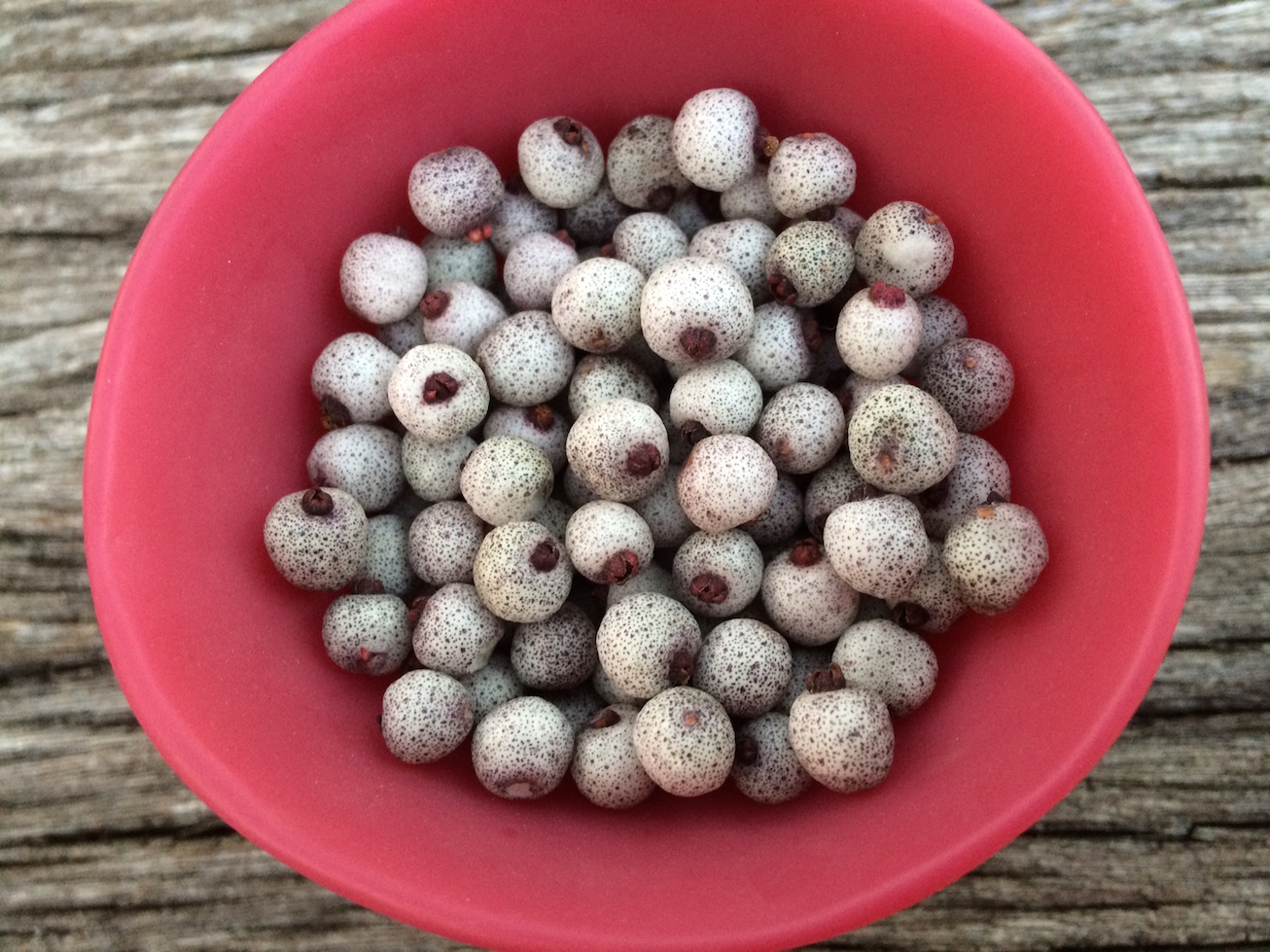
There is nothing not to love about this hardy perennial berry. It’s a must-have for the Australian garden and is growing in popularity as people discover just how fantastic it is. The berries are very delicate and don’t travel well, and this is the reason why it hasn’t been used as much as some other bush foods in high-end restaurants.
Believe me, it’s one of the tastiest bush foods around and it produces an abundance of fruit so you can snack until your heart’s content. I love them fresh from plant, but they are also delicious combined with other ingredients as part of a meal or snack. These berries are also a hit with kids, and are increasingly being planted around preschools and school gardens. Try planting three in clump together and you will never look back.
Description
A hardy and attractive low spreading shrub native to coastal areas of northern New South Wales and south-east Queensland. Its dense evergreen foliage has soft, narrow leaves that have beautiful burgundy new growth making it a great landscaping specimen. In gardens it usually grows around 1 metre in height and around 80 centimetres wide. Pretty white flowers are followed by an abundance of delicate mauve speckled berries. The taste is quite unique and has been likened to blueberries with a hint of spice. Try them for yourself and see if you can come up with a description of the flavour.
These shrubs are also great for attracting wildlife including bees, butterflies and birds. Just watch out that they don’t devour your entire crop. It you have room it can work well to plant a shrub or two exclusively for the wildlife.

Growing Tips
You can plant your midyim berry in the ground or in a container. I have recently started experimenting with growing one in container and 4 months on it is growing well, has flowered and a handful of berries are starting to develop. I plan to lightly prune it as it grows to keep the bush dense and well shaped. I’m interested to see if I can get a decent crop from this plant in 2-3 years.
Find a position in part-shade to full-sun. They will tolerate a wide range of soils as long as it is reasonably well drained, and will respond to soil prepared with compost, as well as mulching over the hotter months to help prevent them from drying out. They will tolerate light frost and you can help protect them by growing them under canopy.
You can propagate midyim berries fairly easily by taking cuttings or by collecting and planting the seed, which will take around 3 to 4 weeks to germinate. If you have a friend who has a well-established plant with particularly delicious tasting berries then ask if you can take a cutting so you can get a genetically identical plant to theirs.
Relatively few pests and diseases affect them. Being a member of the Myrtaceae family they are at risk of myrtle rust, which looks like tiny raised spots that are a brownish in colour followed by orange spots. If you think you have this, you need to call authorities in your State or Territory but this is an unlikely scenario.
Harvesting
In most areas your berries will be ready to harvest in late summer and autumn but there is some variation between different climates. Fruit will look round and soft once ripe and will easily fall off into your hand. To collect berries it’s usually best to hold a bowl under the branch because otherwise they tend to drop to the ground before you can pick them and this saves time.
You will get some berries in your first year, and a substantial crop by the third year.
Uses
Midyim berries are great eaten fresh off the plant. They are also tasty in a fruit salad or savoury salad, or with ice cream or yoghurt, or in desserts or jams.
Where can you buy plants?
Midyim berries are becoming increasingly popular so you might find one in your local nursery. If not, ask if they can order one in or visit a native plant or bush foods nursery and see all the other wonderful edible natives on offer while you are there. There are also many online retailers that sell midyim berries.
Whilst they are only in season for a short time each year, I look forward to nibbling on them in the garden and have been surprised how well they have grown in containers. I think I’ll have to find some spots to plant more.
Read this next:



I love midiim berries!
Could you grow them in North-East Victoria?
Yes, I am growing them as a hedge in NE Victoria- full sun – part shade with capoy of gum trees above!